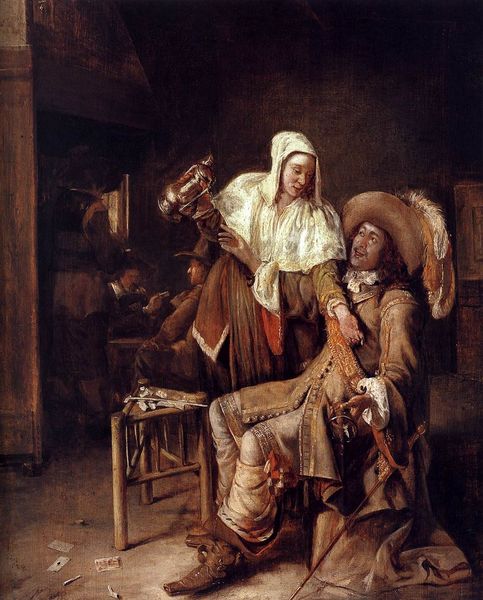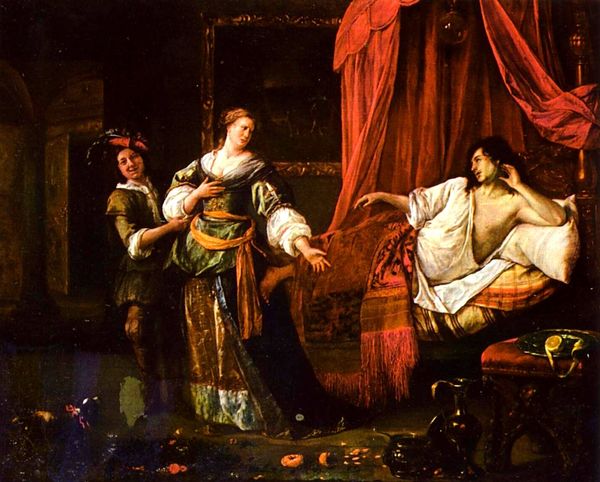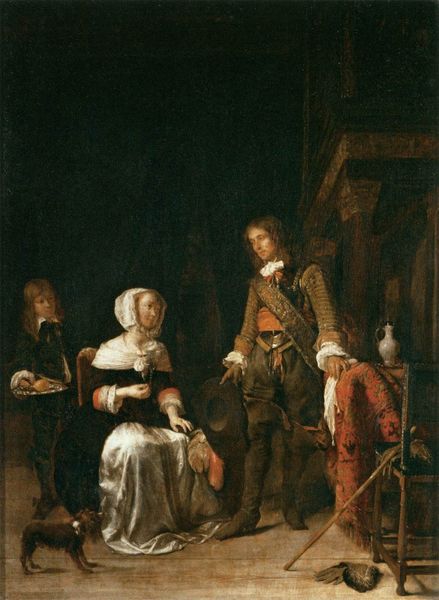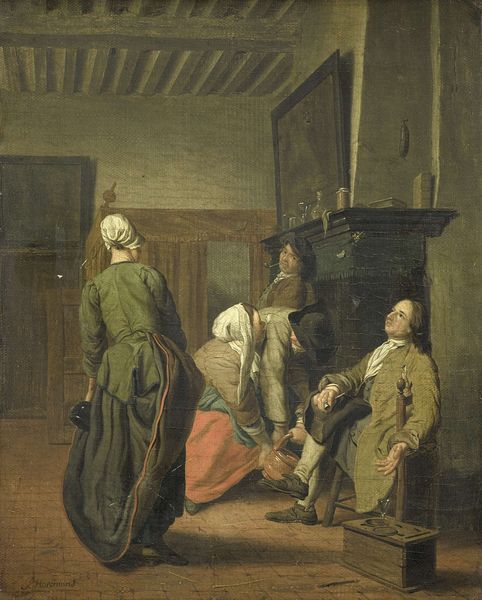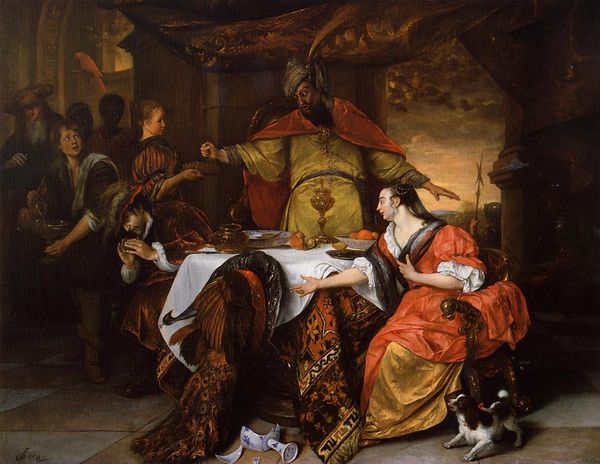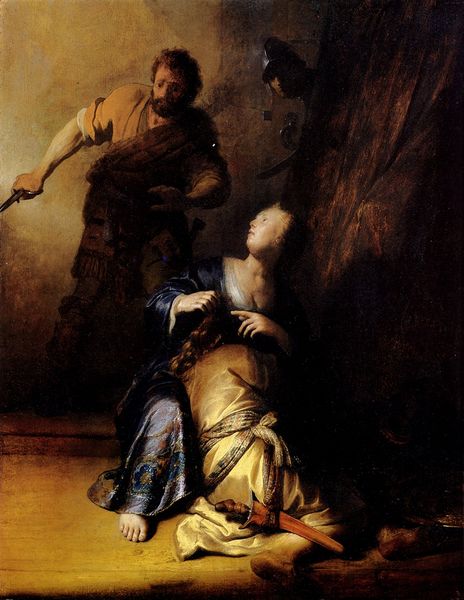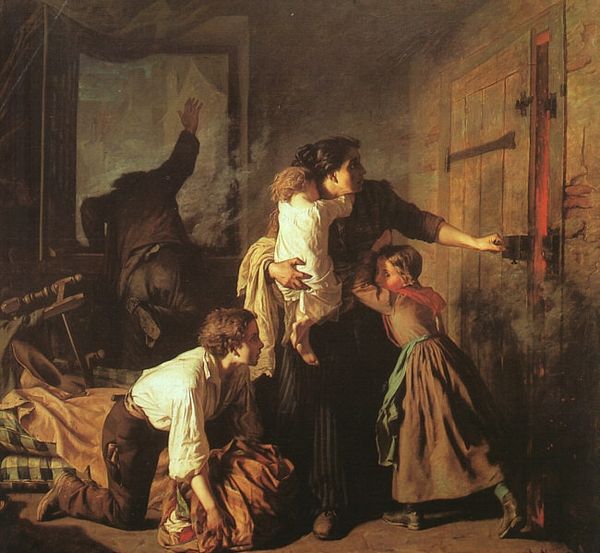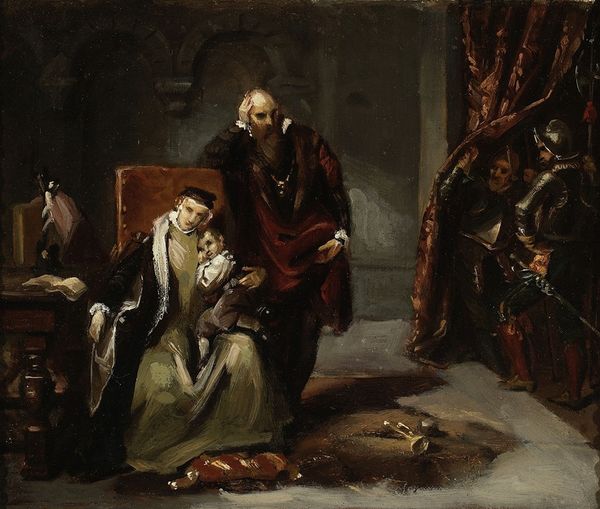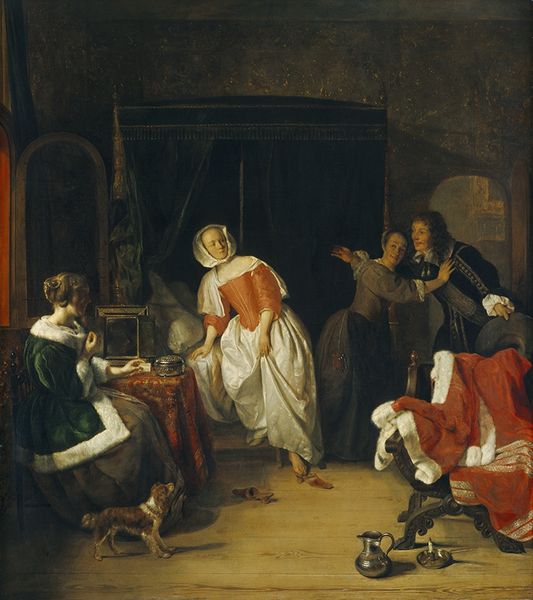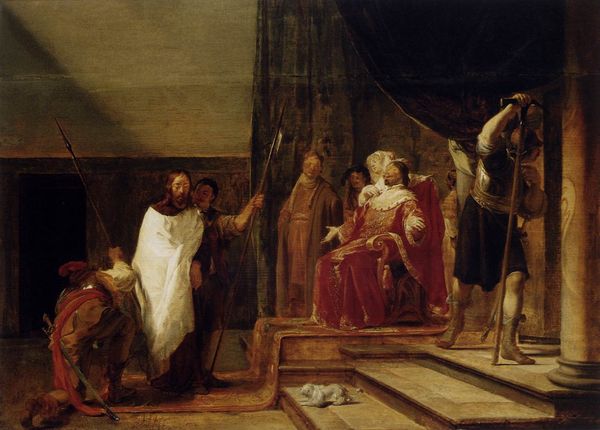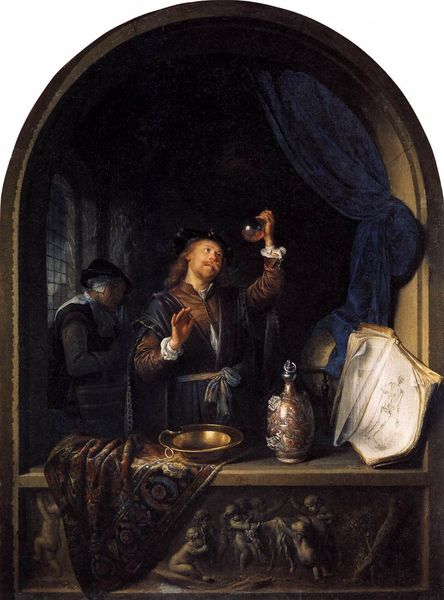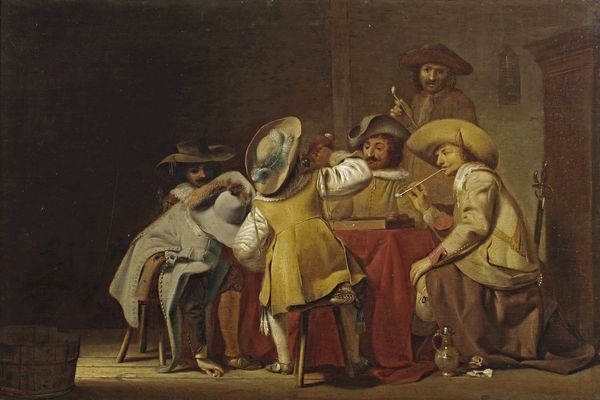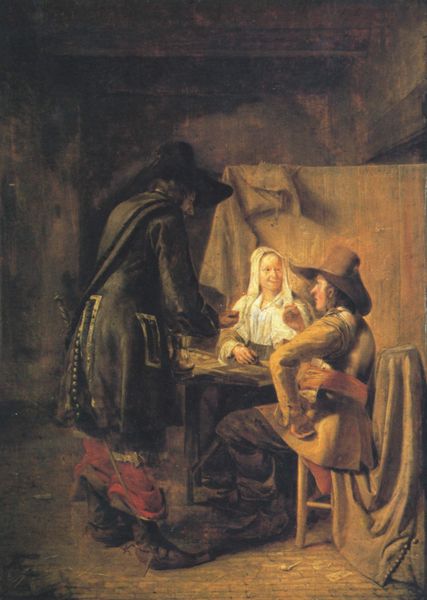
painting, oil-paint
#
portrait
#
dutch-golden-age
#
painting
#
oil-paint
#
figuration
#
soldier
#
genre-painting
Dimensions: 66 x 76 cm
Copyright: Public domain
Curator: Here we have Pieter de Hooch's "Two Soldiers and a Serving Woman with a Trumpeter," created around 1655. It's oil on canvas and exemplifies Dutch Golden Age genre painting. What catches your eye first? Editor: Honestly, that swaggering soldier in yellow, perched precariously, feels like a character straight out of a bawdy play! The composition almost echoes stagecraft, wouldn't you agree? Curator: Precisely! The implied narrative is key. De Hooch uses a subtle domestic scene—a group gathered, perhaps after hours—to reflect broader societal values around camaraderie, service, and, well, perhaps a bit of carousing. Editor: The serving woman holding up the decanter, she seems so complicit and tolerant! It speaks to the coded relationship between servers and soldiers in that period, a dance of power, service, and hidden economies. Think about the symbolic weight of her gesture—offering but also controlling access. Curator: Absolutely. The uniforms too are fascinating. The stark red of the standing soldier contrasting against the soft yellows and browns—could this highlight military order set against more informal, earthly desires? Red often represents the active or agitated state, but perhaps a more dangerous and energized position compared to those enjoying respite from war. Editor: Yes! And there's such darkness in the shadowy edges! Do you sense how the scene could be both festive, with raised voices or perhaps, simultaneously hiding some secrets? Consider the soldier standing sentry outside, back turned to us: it’s more complex than a merry genre scene. It’s an introspective and anxious frame as well. Curator: Indeed! De Hooch balances light and shadow perfectly, and hints at those more complicated truths—about duty, pleasure, and the everyday undercurrents of life in the 17th century. It’s less a pure slice of life and more a studied meditation on the nature of interaction. Editor: It's marvelous how a seemingly simple tableau unlocks a panorama of interpretations. De Hooch gives us all the clues and we are all asked to unlock the meanings and truths we sense within ourselves. Curator: I'll say. It's a rich canvas for historical interpretation, even for pure aesthetic enjoyment.
Comments
No comments
Be the first to comment and join the conversation on the ultimate creative platform.
